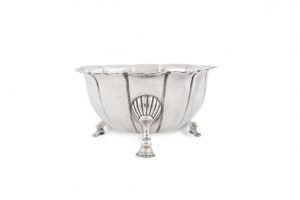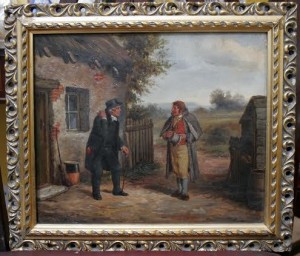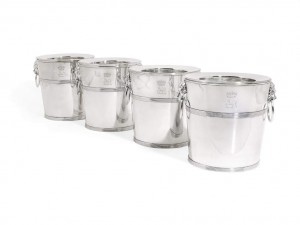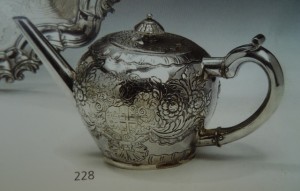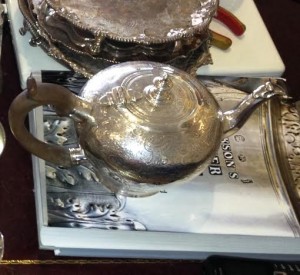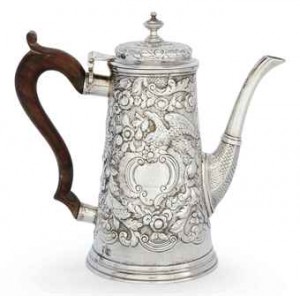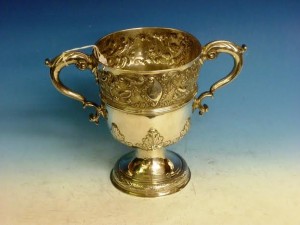Irish silver exhibited at the Museum of Fine Art in Boston in 1963 is to come under the hammer at Bonhams in London on November 23. It is being sold to benefit Milton Academy, the school in Massachusetts attended by Senators Robert and Edward Kennedy, the Anglo American poet T.S. Eliot and the singer–songwriter James Taylor.
The silver was shown as part of the Eire Society of Silver display in Boston. Among the most important items are a George II mug, by Mark Fallon of Galway (£12,000-15,000); a set of four George II candlesticks from 1750 by Robert Calderwood, previously in the collection of Earl Fitzwilliam (£6,000-8,000) and a Queen Anne two handled cup, Limerick 1707 (£4,000-5,000). The sale also includes a gold Freedom Box (£20,000-30,000) presented by the Corporation of Limerick to the Earl of Carrick.
Milton Academy has been rated by the Wall Street Journal as one of the top 25 schools in the world for preparing students for university and is traditionally seen as a feeder school for Harvard. The Kennedys were students here during the 1940s. The silver was given to the Academy and they have been permitted to sell it to raise funds.
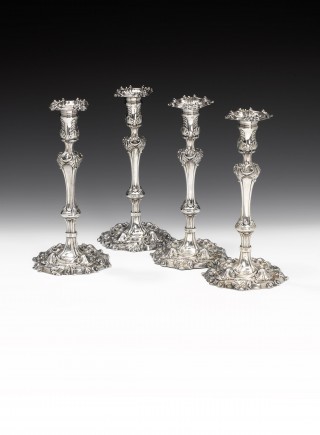
A set of four George II Irish silver candlesticks £6,000-8,000. (Click on image to enlarge). UPDATE: THEY MADE £12,500.

A George II Irish silver mug, by Mark Fallon of Galway £12,000-15,000. (Click on image to enlarge). UPDATE: THIS SOLD FOR £15,000.

A Queen Anne Silver two handled cup by James Robinson of Limerick, circa 1707 - £4,000-5,000. (Click on image to enlarge). UPDATE: IT MADE £13,125.
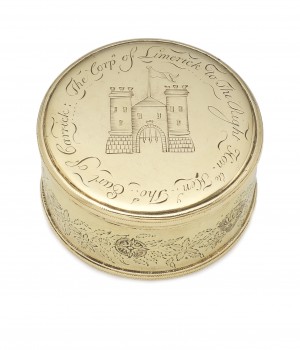
A Gold Freedom box, possibly by Samuel Reynolds £20,000-30,000. (Click on image to enlarge), UPDATE: THIS MADE £25,000.






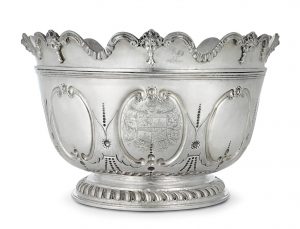
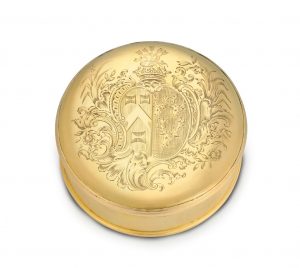
 This two handled Irish silver cup was a 1940 wedding gift to David and Peggy Rockefeller from Mr. and Mrs. Henry Ford of Dearborn, Michigan. It will come up at
This two handled Irish silver cup was a 1940 wedding gift to David and Peggy Rockefeller from Mr. and Mrs. Henry Ford of Dearborn, Michigan. It will come up at 
